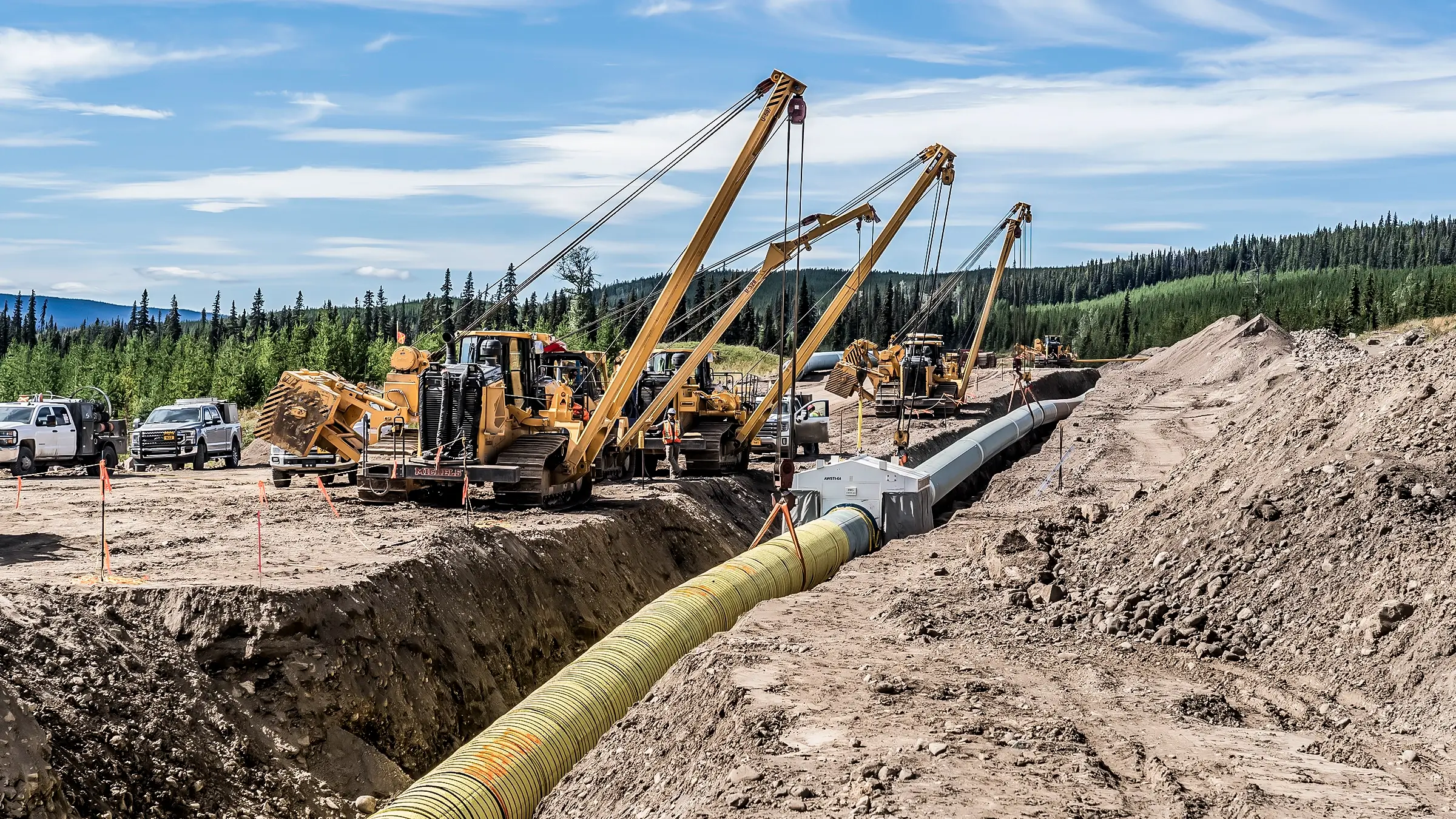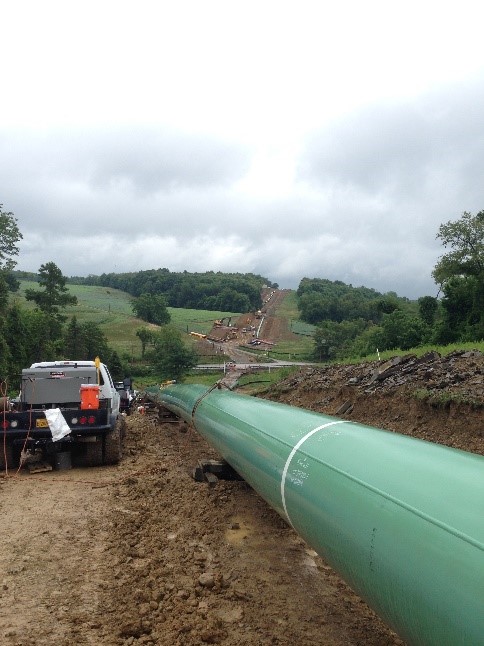Why More Contractors Recommend Creek Pipe Texas oilfield Projects
Recognizing the Basics of Pipes Installation: What You Required to Find Out About the Process
Proper pipe installation is essential for any type of pipes system. It needs careful consideration of numerous factors, including material selection and adherence to neighborhood guidelines. A well-planned design can protect against concerns like stress loss, while the right tools assure efficient joining techniques. Also experienced installers can make common blunders. Understanding these essentials can result in a more efficient and resilient system, motivating a more detailed consider the vital aspects entailed in the process.
Selecting the Right Materials for Pipe Installation
When considering pipe installation, the selection of proper products is necessary to making certain resilience and performance. Numerous products are offered, each offering one-of-a-kind advantages and factors to consider. PVC pipelines are lightweight, resistant to corrosion, and affordable, making them suitable for residential plumbing. Alternatively, copper pipes, recognized for their durability and capacity to endure high temperatures, are commonly favored for heating systems.Additionally, galvanized steel pipelines provide toughness and resilience, suitable for durable applications, although they are at risk to rust over time.For below ground installments, polyethylene pipes are favored because of their flexibility and resistance to anxiety splitting. Proper product selection depends on the particular requirements of the project, consisting of pressure rankings, temperature variations, and the chemical nature of the fluids being transported - Creek Pipe HDPE installation. Ultimately, educated selections pertaining to pipe materials add substantially to the general success and longevity of plumbing systems
Comprehending Local Building Ordinance and Regulations
Exactly how can understanding local structure codes and regulations effect pipe installation? Familiarity with these codes is vital for making sure that pipe installments are safe, certified, and effective. Local building ordinance describe certain requirements concerning products, installation strategies, and safety measures, which must be stuck to to avoid possible legal issues and expensive fines.Failure to abide can bring about assessments being stopped working, hold-ups in task completion, and even mandated removal of poorly mounted pipes. In addition, understanding zoning regulations and policies can influence the type of products enabled, along with the techniques used for installation.Contractors and property owners alike need to spend time in examining neighborhood regulations before starting any type of installation job. This positive strategy not just advertises security but likewise boosts the general high quality and resilience of the plumbing system, inevitably cultivating lasting capability and satisfaction.
Planning Your Pipe Design and Design
Correct planning of pipe layout and layout is crucial for achieving a reliable pipes system. This procedure begins with evaluating the details needs of the room, considering the location of fixtures and home appliances. Precise dimensions ensure that pipes are properly routed, lessening bends and transforms that can result in press loss.Consideration of the flow prices and the kinds of materials utilized is vital, as various materials have differing longevity and compatibility with pipes systems. In addition, the developer ought to make up future growths or modifications to the layout, permitting for versatility in case of renovations.Efficient drainage and air flow are likewise substantial elements of the layout, as they avoid clogs and ensure proper waste elimination. Ultimately, partnership with local building ordinance ensures conformity and safety, which is critical in any type of pipes installation project.
Necessary Tools and Devices for Installation
Effective pipe installation depends upon having the right devices and tools handy. Essential tools consist of pipe cutters for clean cuts, wrenches for tightening installations, and pliers for grasping and transforming pipelines. In addition, a level assurances pipelines are mounted equally, while a determining tape aids in attaining accurate lengths.For details products, a soldering iron might be necessary for copper pipes, while a PVC cutter is essential for plastic alternatives. Security tools, such as handwear covers and goggles, secures installers from possible threats during the process.A pipeline bender can be particularly valuable for creating smooth curves without endangering stability, while a torque wrench assurances that connections are protected to the manufacturer's specifications.Having these tools readily offered not just facilitates a smoother installation procedure yet likewise contributes to the overall longevity and capability of the plumbing system. Proper equipment is vital in accomplishing durable results.
Strategies for Appropriate Pipe Joining and Securing
Achieving a protected and leak-free link in between pipes needs cautious attention to joining and securing methods. Numerous techniques exist, each suited to different pipe materials and applications (Creek Pipe contact). Welding is often employed for metal pipes, pipe lining companies near me guaranteeing robust links through heat blend. On the other hand, plastic pipes profit from solvent concrete or combination welding, developing solid, irreversible bonds.Threaded links prevail in both steel and plastic piping, calling for exact positioning and the use of ideal sealers, such as Teflon tape or pipe dope, to avoid leaks. Compression fittings use an additional alternative, where mechanical pressure safeguards the pipelines together, making them easily disassembled for maintenance.Regardless of the approach selected, appropriate preparation is vital. This consists of cleaning pipe ends and guaranteeing they are devoid of debris. Applying these strategies carefully will improve the longevity and reliability of the pipe system, ultimately adding to its effective efficiency
Common Errors to Avoid Throughout Installation
Throughout pipe installation, avoiding usual mistakes is necessary for making sure a reliable and efficient system. One regular error is stopping working to determine and cut pipelines accurately, Recommended Reading which can result in incorrect installations and leaks. Furthermore, neglecting to inspect the compatibility of products can result in rust or other damage over time. Poorly safeguarding joints and connections can also create weak factors in the system, creating possible failures.Another common blunder is forgeting the importance of slope and water drainage; pipes must be installed at the correct angle to help with correct flow. Inadequate assistance for pipes can lead to sagging and anxiety, influencing the honesty of the system. Inevitably, disregarding neighborhood codes and guidelines can result in pricey rework and safety risks. By knowing these challenges, installers can significantly improve the resilience and performance of pipe systems.
Upkeep Tips for Resilient Pipe Solutions
To ensure the long life of pipe systems, regular evaluations and cleansing are necessary practices. These actions assist identify potential issues before they escalate right into significant troubles. Furthermore, utilizing correct insulation methods can additionally shield pipes from temperature level variations and ecological aspects.
Normal Assessments and Cleaning
Routine assessments and cleansing are essential for maintaining the durability and efficiency of pipe systems. Frequently taking a look at pipes for signs of corrosion, leaks, or obstructions can aid recognize prospective problems prior to they escalate right into expensive repair services. Cleaning up pipelines regularly removes accumulation that can restrict circulation and promote damage. It is advisable to arrange assessments at the very least yearly, however extra frequent checks may be needed in high-usage environments. Utilizing professional solutions for comprehensive cleaning guarantees that all debris is efficiently removed. In addition, keeping records of evaluations and maintenance activities aids in tracking the system's health and wellness gradually - Creek Pipe pipeline construction. By focusing on these techniques, building owners can boost the dependability and life-span of their pipe systems
Correct Insulation Techniques
Reliable insulation methods play an important duty in keeping the efficiency and durability of pipe systems. Appropriate insulation decreases warm loss in hot water pipelines and avoids freezing in chilly water pipelines, their explanation considerably lowering energy expenses and possible damages. Typical materials utilized for insulation include fiberglass, foam, and rubber, each offering varying degrees of thermal resistance. It is essential to guarantee that insulation is applied evenly, covering all exposed areas without voids. Additionally, securing insulation with suitable bolts aids keep its setting and effectiveness over time. Regular inspections need to be carried out to identify damage, assuring prompt substitutes. By implementing these methods, pipe systems can operate efficiently and have an extensive life span, eventually benefiting both the atmosphere and the homeowner.

Often Asked Questions
Just how Do I Figure Out the Appropriate Pipe Size for My Project?
Figuring out the proper pipe dimension entails examining the project's flow requirements, pressure specifications, and the sort of liquid being carried. Consulting layout standards and carrying out estimations guarantees optimal efficiency and performance in the installation procedure.
What Are the Environmental Influences of Various Pipe Materials?

Can I Install Pipes Myself or Should I Hire an Expert?
The inquiry of whether to install pipelines separately or employ an expert frequently depends on the person's ability level and job complexity. A specialist may ensure compliance with policies and minimize potential long-term concerns.

How Much Time Can I Anticipate My Pipe Installation to Last?
The longevity of pipe installation differs substantially, usually lasting 20 to 100 years, depending upon materials, installation top quality, and upkeep. Regular assessments and correct care can boost longevity and protect against premature failings.

What Are the Indicators of a Failing Pipe System?
Signs of a falling short pipe system consist of constant leakages, uncommon water pressure changes, discolored water, mold growth, and consistent dampness. House owners should keep an eye on these indicators to avoid costly damage and warranty timely fixings are made.